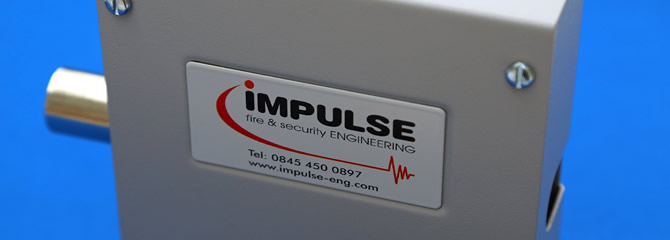

Access control
Access control can be an important part of an overall electronic security system, it enhances the security of employees, buildings and assets, it should integrate well with other in-house security measures and produce a reduction in the overall cost of managing security, if designed and installed well.
Good design will result in the selection of the right equipment, much of this will be dictated by the Grade of the system. For example - Tokens (what you have), Swipe cards, Contact cards or Tags, Passive proximity, Active proximity, RFID or PINs, (what you know) and Biometric (what you are) singularly or for Grade 3 systems, a token and a PIN would be needed or a single biometric reading.
Access control systems are graded in a similar fashion to IDS (intruder detection systems), There are four grades:
Grade 1 (Low Risk) -A standalone lock (code, PIN or token), or off-line system, controlled in a public area for low risk situations.
Grade 2 (Low to medium risk) -An on-line system utilising tokens or PINs to prevent access to the premises. Events are received in real-time on the monitoring software.
Grade 3 (Medium to high risk) -An on-line system using two factor authentication or single-factor biometric to prevent access to the premises. Events are received in real-time on the monitoring software.
Grade 4 (High risk) - An on-line system using two (or more) factor authentication, one of which should be biometric or human image verification to prevent access to the premises. Events are received in real-time on the monitoring software. When using biometrics, careful selection of the quality should be carried out to reduce the FAR (false alarm rate).
The grade applied to each point may vary by time, increasing for example from card only during office hours to card and PIN outside hours. Grades are applicable to the point of entry and not the whole system, unlike IDS.
We specialise in mid to enterprise level, server based, distributed or networked systems. Often the choice is limited when specific approvals are needed. We are an authorised supplier of Grosvenor Technology JANUS & SATEON access control solutions. Grosvenor Technology is a global leader in advanced access control and security management systems and their JANUS access platform has long been recognised as a market leader serving entry, mid-range and enterprise solutions alike. JANUS integrates with CCTV switchers, digital and network video recording, time & attendance, intruder and other critical business systems to become the ‘hub’ or focal point of a company’s electronic security.
SATEON is a 100% browser based, new generation access control system. As an end user, all your work is done in the comfort and convenience of your favourite internet browser. All system configuration and administrative tasks can be done from any PC on your network. Do everything you need in a familiar and highly user friendly environment. Easily access SATEON from work, home and abroad.
No access control system is complete or effective with the physical barriers to the protected space or facility.
The normal barriers to entry (and egress) in commercial properties are often sufficient in strength to attach control & locking devices to. However, in more secure environments these may need to meet specific standards (such as a CPNI listed product). Outer perimeter boarders may need deterrents such as rising arm barriers or secure gates / road blockers. These need to be selected based upon risk and interfaced appropriately depending upon the level of control and observation.
Legislation & applicable standards
- Secured by Design www.securedbydesign.com
- BS EN 50133-1:1997 System requirements for access control systems, British Standards
- BS EN 50133-2-1:2000 Component requirements for access control systems, British Standards
- BS EN 50133-7:1999 Application guidelines for access control systems, British Standards
- LPS 1175 Requirements and testing procedures for the LPCB approval and listing of intruder resistant building components, strongpoints, security enclosures and free standing barriers, LPCB
- NCP 109 NSI Code of Practice for Planning, Installation and Maintenance of Access Control Systems, NSI
- PAS 24: 2007+A1: 2009 Enhanced security performance requirements for door assemblies , British Standards
- PAS 68: 2010 Impact test specifications for vehicle security barriers, British Standards
- STS201: Enhanced security requirements for doorsets and door assemblies for dwellings to satisfy the requirements of PAS23 and PAS24, Warrington Certification
- STS202: Requirements for burglary resistance of construction products including hinged, pivoted, folding or sliding doorsets, windows, curtain walling, security grilles, garage doors and shutters, Warrington Certification
- BSIA Guide to Integrated Security Management Systems (Form 203), BSIA
- Disability Discrimination Act 1995 & Disability Discrimination Act 2005 as amended
- Equality Act 2010






